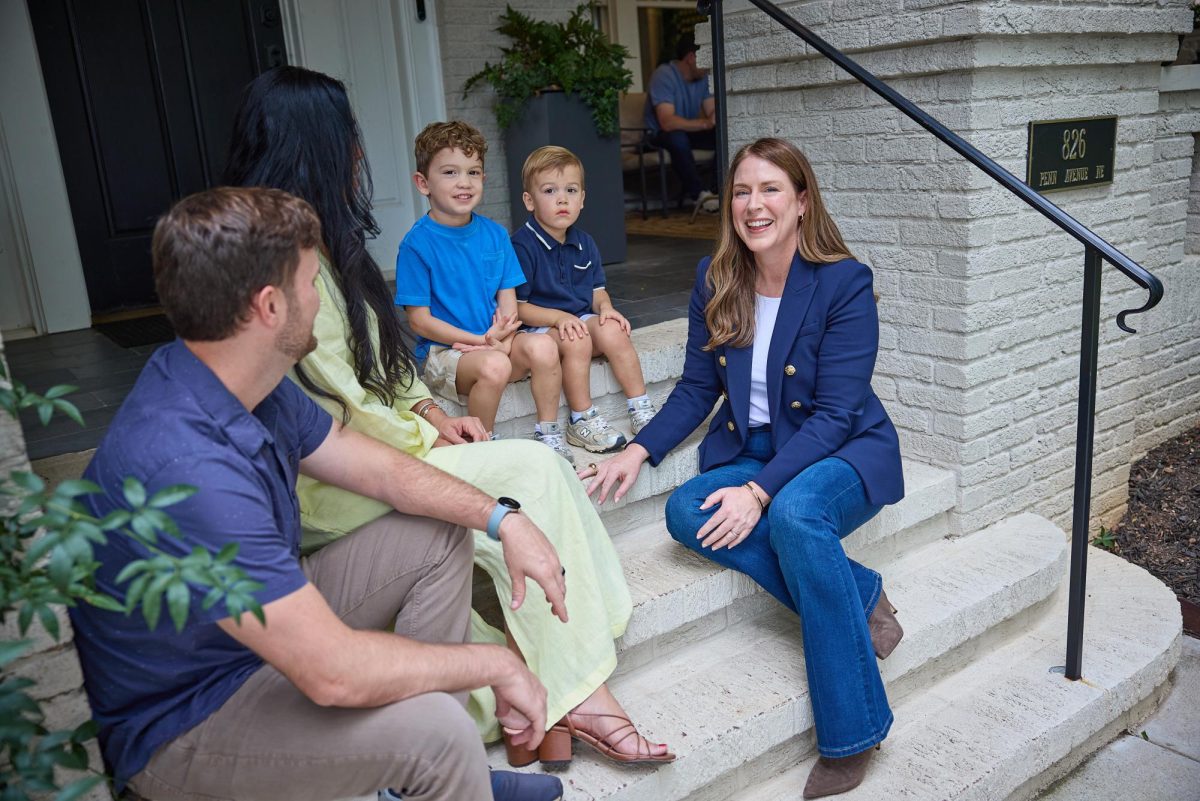Little Middle to Big High School
Little Middle School alumna Grady Freshman Gigi Fisher stands in the Grady hallway adjusting to the changes that come along with a new school.
January 17, 2019
So many students packed into one school can become a little overwhelming if you’re not used to it. This came as a shock to one particular group of students who attended The Little Middle School (LMS) before coming to Grady.
At Grady, there are nearly 1,400 students in total, however, at the LMS they have about 18 to 25 students in the entire school.
“Going to a small school has made me want to meet more people,” Grady freshman and LMS alumnus Gigi Fisher said. “It’s easy to get bored of seeing the same people everyday. I don’t feel pressured or scared by the amount of people at Grady.”
Attending a school like LMS can change a person’s perspective in many ways, especially socially. Being in such a small environment can make one find their true identity.
“When I left the public school scene I was an extrovert, but now I am more of an introvert,” Fisher said.
For Grady freshman and LMS alumna Sully Jones, it was a helpful experience.
“Going to a small school helped me figure out who to trust,” Jones said.
Due to Grady’s large enrollment, an individual class sizes can be higher than the whole population of LMS. One of these potential negatives, focusing in class, can be hard for any Grady student since the classes are an hour and a half long. The former LMS students especially struggle after coming from an average of 45-minute classes.
“The classes at Grady are very long, and I often get off track,” Fisher said. “I have a hard time focusing for that long.”
For Jones, it was less about the logistical differences and more about the teaching style. LMS offers more direct involvement from the teacher, while Grady has a bit more of a sink or swim system.
“My learning ability hasn’t changed, just the way I learn has,” Jones said. “At Grady, I am learning more, but less effectively.”
Because of the ability to have their own curriculum and schedule, learning at LMS introduces different learning styles.
“Learning is harder because my middle school had a different curriculum, so I get behind,” Fisher said.
Additionally, many students felt lost when coming to Grady. Because Grady is a typical four-year, public high school, there is a strict pathway when it comes to graduation requirements.
“I felt completely unprepared for high school,” Jones said. “I felt as if I couldn’t mess up or that was it, and I wouldn’t graduate.”
The stress of getting good grades is newly implanted into former LMS students, where grades weren’t necessarily the most important measure of success and understanding.
“I would have taken middle school a bit more seriously,” Jones said. “We didn’t have grades or tests, so it was easy to get off track.”
All of these fears that the students face are translated to many of the parents, who fear that the jump may be too far for their students to fully succeed.
“We had been worried about her ability to manage all of the workload, testing and grades in general, since at LMS there are no grades and no testing,” said Allison Jones, Sully’s mother.
The negatives can outweigh the positives and regret can come into play.
“I wouldn’t have done it if I could go back and change my life,” Fisher said.
At a school such as Grady where many students can get lost in the big classrooms and lecture-style instruction, the smaller class sizes at LMS can especially be very beneficial for students with learning disabilities.
“My child had been diagnosed with dyslexia in second grade and always had trouble reading,” said one LMS and Grady mom.
From a parents’ perspective, they understand the struggle of a large class.
“Class size probably does affect her ability to ask questions and to interact, but she seems to be having great conversations with her teachers outside of class,” said Jones







